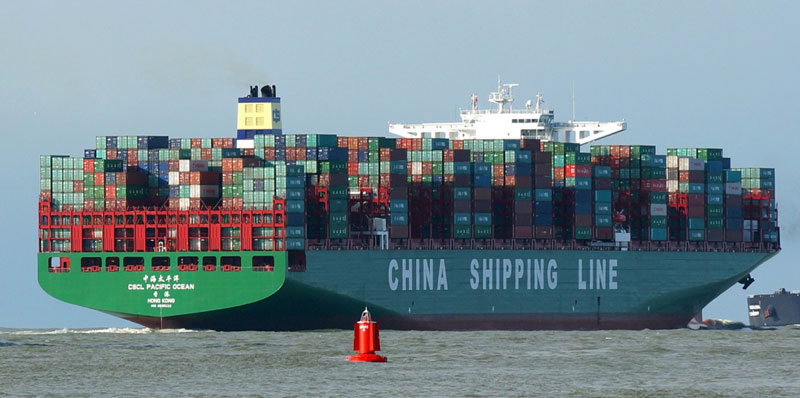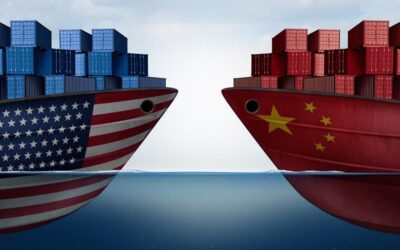Lowering your ocean freight costs and boosting margin
When it comes to total shipment cost, ocean freight costs are a major component and every freight forwarder and shipper tries their best to negotiate the best container rates. The first step to a successful negotiation begins with careful planning – a better understanding of your own shipping requirements, monitoring market conditions, and leveraging this when entering into carrier rate negotiations.
Table of Contents
Here are a few tips for lowering ocean freight costs:
1. Understand the market, your business, and terms of sale
Always know the market you’re playing in and avoid paying more than the market rate to vendors. Utilize freight cost benchmarking techniques such as asking different forwarders for quotes to get a sense of what they are charging and then choose what suits the best for you.
Having a better understanding of freight rates and trends can help your business better manage their production time before peak seasons. It can also help optimize for shipping more when rates are lower, thus achieving better cost savings.
Supplement this market knowledge with an awareness of the business. What costs are involved in shipment and who’s responsible for payments. Know your terms of sale and shipment. Ask yourself, what are the Incoterms involved and terms of shipment? Knowing the costs associated with these helps you understand what you do and don’t need to pay for.
2. Plan carefully, not everything is urgent
Always have a clear understanding of the requirements. Know what’s the scope of business, frequency of shipments and the agreed upon quantities. Utilize this information in your planning so you can better negotiate with carriers.
Keep in mind, carriers often give the best quotations to customers who have a clear understanding of what they want and importantly forecast this clearly through careful planning and analysis. This demonstrates competency and credibility which carries like.
Similarly, not everything is urgent. Adopt an effective practice of timeline management so that not all orders are classified as urgent and incur heavy expedite costs. Reduce these charges by planning better on which cargo truly needs an urgent delivery.
3. Be prepared
Effective planning, preparation, and implementation of your tender management process can be hugely beneficial to your freight costs, if your procurement is based on a tender. Keep in mind, effective preparation happens both on land and sea, and both can pay great dividends in cost management.
4. Choose the right mode of shipment
Is it Full container (FCL) or LCL or groupage? Ensure you’re using the right mode of shipment that best meets your cargo requirements. LCL or groupage involve multiple charges compared to a full container shipment method so evaluate if it’s necessary.
Similarly, with FCL, determine whether this mode can be optimized to save costs. Match the right type of cargo to the right container so you’re lowering overall costs.
5. Avoid those unnecessary charges
Demurrage or detentions are common reasons for incurring extra charges at POL or POD. Avoid these by having the correct documentation submitted on time. The penalties in such cases are extremely high so plan and be prepared to avoid these unnecessary charges.
6. Choose the best route and packing for your cargo
Optimize your routes to lower overall freight costs. Sometimes the most cheapest quote isn’t the best one when it comes to cost savings so be sure to analyze the routes each carrier takes and pick the best one that delivers your cargo for great value.
Similarly be thoughtful in the way your cargo is packed into containers. Ensure you’re using the right size of packing materials such as cartons, boxes, etc. that reduce empty/wasted space.
7. Consolidate your shipments
Consolidate your shipments. Send fewer and larger shipments to help reduce costs and shrink your carbon footprint. Moreover, consolidated shipments provide more flexibility within your supply chain and enhance your ongoing inventory replenishment efforts.
8. Access special deals by triangulating your containers
Triangulation involves using the same container for export and import purposes that is exporting cargo from A to B and then using the same container to bring back imports. Such techniques optimize your freight planning and carriers offer special deals if you’re able to do this, thus lowering costs.
9. Better communicate with your carriers
As with any business arrangement, communication is the key. Making it a good practice of establishing open, clear communication lines with your carriers can go a great deal in avoiding any mishaps as a result of miscommunication that can prove to be expensive down the line. Keep everyone involved in the loop.
10. Audit your quotations and invoices
Always make sure you’re doing a complete audit of your quotations and invoices. More than 25% of ocean invoices have errors and these errors can be costly!
Mistakes involve carriers missing out on adding shipping surcharges and requesting payment at a later stage. This can affect your cost planning and negotiations, and in most cases, the customer may not agree to pay for additional charges and it’ll have to be covered by you.
In summary
Getting the best freight rates can make a huge difference in boosting margin for your business. The tips shared above can better help with your freight cost management process but with everyone on the hunt for the best rates; it’s important to not only keep cost savings in mind but balance your negotiation and acceptance of certain rates with the quality of service provided and market reputation.






